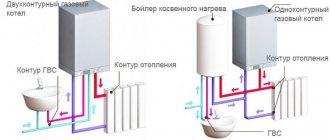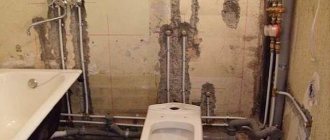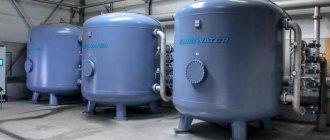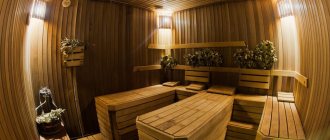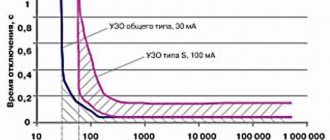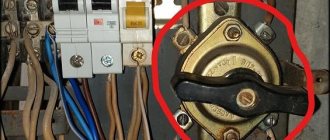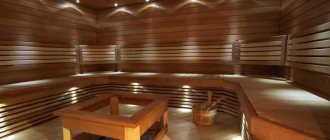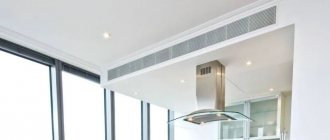Currently, providing the population of our country with hot and cold water is the primary task of housing and communal services. Although many residents have autonomous devices, most settlements are powered by mains. Let's figure out together what it is - a central or centralized drinking water supply system, which is a complex infrastructure complex that includes not only a pipeline line, but also intake and distribution stations.
What is meant by this definition
Living in an apartment or private house, you open the tap and use the incoming liquid. At the same time, you don’t think about what storage it came from. And before coming to your home, she had a long and technologically complex path. The shortest path in small settlements. An artesian well is usually used, and this is enough to provide several thousand residents with drinking water. The situation is more complicated in large cities and those settlements where this is not possible. As a rule, nearby bodies of water (river, lake, artificial storage facilities) serve as sources. Since the quality does not meet the standards, cleaning is provided. Objects of a centralized water supply system are not only pipelines through which liquid is delivered, but also numerous structures that ensure stable operation, sufficient cleanliness and safety.
How to get rid of air in pipes
If there is already air in the water supply system of a private house, but it is not equipped with bleeders, you must:
- Turn off the pumping station.
- Open all drain taps and release water and air from the water supply system. After which the pipes are filled again.
You can remove air from the water supply system once and for all using bleed or drain devices:
- mechanical valves such as the Mayevsky valve;
- automatic air vents;
- ball valves;
- valves
Mechanical air release valve device
from the water supply system is as follows: a cylindrical box, closed with a lid at the top, and a thread at the bottom for connecting to the water supply. There is a threaded plug in the middle of the lid. A plastic float in the shape of a ball is suspended inside the cylinder. If there is no air in the hot water supply system, the ball rises to the hole in the plug and closes it tightly under network pressure. As soon as air enters the device, the ball moves away and the air is released. Air can enter the system through the bleeders, which is useful when repairing or inspecting networks and speeds up the drainage of water.
But once a person invests in a hostage, it might not be a bad idea to get one test done early and one before the hospital. This allows you to compare the difference between water quality and spring quality. Whoever polluted the water before and after it has a certain guarantee that the spring provides drinking water. And to conclude that he only neglected regular maintenance.
If contamination occurs within the next three days, it is worse. Obviously, water is obvious, and if it is to be used for drinking, it is necessary to find a water filtration specialist and prepare for a multi-level edition. Patience is not difficult for those who are afraid of hard and dirty work. However, he must adhere to several key principles.
Homemade air accumulator
In rural water pipes, air often flows mixed with water. Using such a water supply is difficult and inconvenient, and the automation does not always cope: if there is a lot of air, the water overflows like a fountain directly from the valve. Therefore, instead of an automatic air bleeder, an air accumulator
. You can make it yourself; it is a tank with an outlet pipe and a tap. The diameter of the storage tank must be 5 times larger than the diameter of the water pipe, then it can work effectively.
Especially in deep fountains there is a layer of poisonous gas. Therefore, it is necessary for the unfortunate person to come into the depths to secure the rope. In case of danger, his colleague can come out. After the shots you don't fall into a deep well, you need to get a stick with a rope. Don't even think about using a small mud pump from the hobby market for a thousand crowns. Often the spring is so fertile that even professional pumps do not place the “dry” well. And these are tools costing up to 40 thousand CZK with a three-phase electric motor.
Then it is not enough to use a rental company, prices range from 250 to 500 CZK per day, but you need to pay a deposit of about 10,000. With the wells we went to the hospital that the owners had neglected for 15 years. An old well in a 200-year-old building. Although the original hole was equipped with springs, no one thought about the wellbore around the cain. The old vaults and blocks have already begun to collapse, the remains of the gardens fall directly into the well. Now is the time to start with reconstruction.
Operating principle
The functioning of such a large farm is not much different from a private installation on a summer cottage. Only the volumes of liquid produced are much larger; the nodes and scale of the entire complex are enormous.
The path of moisture begins with the intake. After primary filtration, the pumping station delivers the product to treatment devices, where it is brought to the desired quality (removal of sand, clay, fine gravel, silt). The next stage is a more subtle cleaning - removal of excess dissolved substances and disinfection. Next, usable water enters the mains using pumps that maintain constant pressure. Since distances can be very long, there are several more supporting stations on the way to the crane.
Low pump power
Before purchasing a water station, the required pump power must be calculated taking into account the depth of the well, the volume of water used and the design features of the water supply system. But even this cannot protect against the fact that one day the power of the unit will begin to decrease.
Insufficient power of the pumping unit may be due to the following reasons:
- Wear of structural parts. Most often, the cause of the problem is imbalance of parts: grains of sand and small contaminants accumulate between the pump shafts, which loosen the elements of the unit and prevent it from working at full capacity. The simplest solution to the problem is to install purification filters at the water inlet. The second possible reason is deformation of the rubber valve. In this case, it is recommended to completely replace the part, since even after repair the valve will not allow the pump to develop the required power.
- Decrease in water level in the well. The most rational, albeit costly, way to solve the problem is to purchase a deep-well pump.
Advice. When buying a pump, choose a model with a power reserve in case, during the operation of the water station, you need to lay additional pipes or install new household appliances that use water.
Main components and objects of the central water supply system
The entire farm is divided into two parts:
- Facilities that ensure the accumulation, collection, preparation and bringing to the required quality requirements of the product supplied to consumers.
- A complex of highways and engineering devices that carry out storage, transportation and distribution.
Near most megacities, reservoirs are built into which all nearby sources flow. The large volume ensures the guaranteed availability of raw materials to provide drinking resources to both residents and industrial facilities. Open storage contains many unwanted impurities, so filtration is an important step. It consists of sedimentation tanks, aerators and various filters. All operations are served by pumping stations. An important component of the process is security, since providing fluids is a strategic task that affects a large number of people.
Advantages and disadvantages of centralized water supply
MBFT-75 Membrane for 75GPD
SF-mix Clack up to 0.8 m3/h
SF-mix Runxin up to 0.8 m3/h
The advantages include:
- There is no need to spend money on drilling your own well, equipping it in accordance with standard standards
- Ease of use and stability of receiving the service.
- Product quality control is not the responsibility of the average person. All procedures are handled by the housing department.
- The flow intensity does not depend on the network voltage; you are guaranteed the same pressure.
- No special structures are required to accommodate storage containers.
- Low cost per liter of consumption.
There are few disadvantages:
- Inability to influence characteristics on your own. This can be solved by installing additional devices inside the household.
- Emergency situations lead to problems for a huge number of neighbors at the same time.
Modern technologies make it possible to partially compensate for such shortcomings. The industry produces stations, storage devices, and filters.
Video review - Operating principle of the hydraulic accumulator
A special relay unit automatically turns off the pump when the pressure tank is completely full. And for some time the energy of the membrane does not allow the pressure to decrease. When the accumulator is empty, the pump starts again. Such an arrangement saves the water-pumping unit from short-term and frequent starts/shutdowns. This reduces the wear rate of its parts. For everything to work correctly, the pressure tank must have a capacity that matches the volume of water required. Normally, the tank must accommodate from a quarter to half the displacement that the pipes are capable of passing per minute.
A correctly selected volume of the device ensures that it operates at a frequency of five to fifteen times per hour. In this operating mode, it is extremely necessary to use a reliable and elastic membrane that can withstand heavy loads.
Since hydraulic accumulators operate in domestic water supply systems, the material from which they are made must be non-toxic, approved for use in contact with clean drinking water.
The water entering hydraulic accumulators for water supply mainly comes from underground wells or wells. Hence its saturation with oxygen, which is released during the operation of the system, accumulating in the membrane. To do this, most modern devices of this type have a safety valve on the top of the body that bleeds air if necessary. As a rule, hydraulic accumulators are used on cold water supply lines, so the temperature conditions in which they are used are more gentle.
It is advisable to install such a pressure element before the water supply circuit begins to branch. The best place is immediately after the water supply pipe enters the premises. It also wouldn’t hurt to install a check valve. Especially if one is not included in the pump. In addition, it is recommended to install a pressure gauge to monitor the pressure created.
Conditions for connecting to the central water supply system
The main indication by which the decision is made to connect your facility to the pipe is the ability to provide it. In other words, does the organization have the resources to supply you with liquid.
The second factor is the availability of infrastructure. If there is a long distance to the building, you may have to bear part of the costs yourself.
In some cases, there are insurmountable obstacles that limit the construction of the highway (railway line, rock formations, canals, strategic objects, etc.).
In order to initiate the connection process, you need to contact the water utility in your area. There you can both learn about the operation itself and find out what actions you must take (provide documents, buy a meter, pay for work, etc.).
Scope of application of a centralized water supply network
This form of resource provision is used in cases where the creation of this structure is economically justified or in situations where it is completely impossible to organize individual supply. Typically, settlements with a hundred or more inhabitants, especially if there is some kind of production, are already extremely interested in creating such complexes. Moreover, an artesian well is legally an extraction of resources and requires legal registration.
Experience shows that having a public source is much cheaper for users, and the quality of the liquid is noticeably higher.
Causes of air locks in pipes
This by-product contains approximately 32% oxygen, that is, there is a third more oxidizing substance here than in the atmosphere. The freely expressed form of these clusters is not the same. Only bubbles up to 1 mm can be considered spherical. A larger number may have an ellipsoidal or mushroom-shaped topology. In vertical sections of water supply risers, air-gas inclusions rise upward or remain suspended. In horizontal pipelines they always “stick” to the walls at the highest point, which can create conditions for active rusting of the pipes
Converting sensible heat into latent heat
For cooling, the heat pump can be used directly and cooled by underfloor heating. The advantage of this action is that we preheat the earth's heat exchanger during the winter season. The conversion of sensible heat into latent heat is based on what is called adiabatic cooling. We use the fact that evaporation is cooled or energy, expressed as air temperature, is consumed by the process in which water changes from a liquid to a gaseous state.
When the water speed begins to exceed ½ m/s, air accumulations begin to move along with it. If the liquid flows in the circuit faster than 1 m/s, then the air in the water supply system breaks into tiny capsules and a kind of emulsion of gas and liquid is created. Practical observations have revealed that the minimum rate of destruction of such accumulations in a water supply system is about ¼ m/s. With a lower flow rate, air pockets can remain in the same areas for a long time, which is undesirable.
Therefore, heat is not consumed to increase the temperature of the water, but to make structural changes in the substance. We call the stored energy latent heat. Direct adiabatic cooling is achieved by spraying water into the air supplied inside. This type of cooling can be used in hot and dry climates or in special operations where we need high air humidity. This is an air conditioner called an air puck.
The advantage of direct adiabatic cooling is that it does not represent an investment that already has mechanical air conditioning installed, since air humidification is usually part of it. The disadvantage is higher maintenance requirements. The shower stall needs to be cleaned regularly to avoid dangerous bacteria.
To get rid of air accumulations, various bleed/bleed devices are used. These include automatic air vents, mechanical valves (for example, the “Mayevsky valve”), and conventional shut-off valves (valves, ball valves). A standard regulator of this kind is made in the form of a cylindrical shell with a flat cover. In the center of the latter there is a threaded plug with a hole of 3-5 mm. A float ball made of polymer or cork is placed inside the body. When there is no air in the pipes, this element tightly closes the hole in the lid under the influence of network pressure. If an air accumulation appears in the device, the ball falls for a moment and allows this mixture to escape through the hole in the lid.
Air vents are also able to perform the opposite effect - to introduce a certain amount of oxygen into the pressure network. This happens accidentally or is necessary when quickly draining the resource before inspecting and repairing the water supply.
In order for the air in the water supply system to be removed in a timely manner, it is necessary to correctly install its release mechanisms at the required points. They are mounted at the top points of pipelines, at kinks or bends, since this is where the air-gas mixture accumulates.
Regulatory Requirements
SF-mix manual up to 0.8 m3/h
AMETHYST - 02 M up to 2 cubic meters/day.
Aeration unit AS-1054 VO-90
If checking and monitoring the parameters of an individual well is a voluntary matter of the owner himself, then supplying a large number of people with moisture requires serious security. Therefore, standards have been developed, compliance with which is monitored by the sanitary and epidemiological service. These standards make it possible to prevent widespread harm when using sources. One of the consequences of disinfection measures is the smell of bleach. You have to put up with this, especially since there are gadgets that can effectively purify liquid from the tap. Such devices can be purchased at any specialized stores, for example, at.
Elimination of cavitation
Most often, cavitation occurs in the trunk of telescopic wells
What can be done to avoid the appearance of air in the well and the entry of water with bubbles:
- Replacing a small-diameter suction pipe with a larger one;
- Moving the pump closer to the storage tank.
Attention! When moving the pump, follow the established standards: the distance from the pump to the tank cannot be less than 5 diameters of the suction pipe!
- Reduce the pressure of the suction element by replacing it with a smooth pipe, and the valve can be replaced with a slide valve, and the check valve can be removed altogether;
- The presence of a large number of turns in the suction pipe is unacceptable; they must be reduced or the bends with a small radius of turns must be replaced with large ones. The easiest way is to orient all the bends in one plane, and sometimes it’s easier to replace rigid pipes with flexible ones.
If all else fails, you will have to increase the pressure on the suction side of the pump by raising the reservoir level, lowering the pump installation axis, or connecting a booster pump.
Note that all manipulations are shown based on a large volume of water consumption and the installation of powerful pumping devices
And, it is important that cavitation can only occur at a depth below 8 meters. It is with this length of all elements and the presence of high pressure in the pipes that the liquid turns into a gaseous state and the water flows with air
Characteristics and types of fence units
There is enough fresh liquid in our country. The only problem is how to deliver it to the consumer in a big city. To solve this problem, all possible options are used. Conventionally, two main types can be distinguished: surface and underground resources.
Underground
These include well-known wells, artesian wells, and natural magmatic desalination plants. As a rule, the bulk is formed due to the collection of atmospheric precipitation. There is a division according to the depth of occurrence. If the layer is located above the supporting impermeable rock, then it is of the surface type. The quality of the liquid from such points is quite low and productivity is subject to seasonal fluctuations. Deeper underground lakes have a variety of resources for use, and their composition can be either fresh or highly mineralized.
Superficial
Rivers, lakes, and artificial irrigation structures are often the main point of product collection. Simplicity and large volume make it possible to supply a huge number of people from such places. Many countries use man-made desalination plants. The intake is made from the inexhaustible ocean, but this is a very expensive business. Therefore, this method is used in rich countries, as an example, in Saudi Arabia.
Rivers and lakes
These natural systems are convenient because they naturally collect precipitation from large areas. Moreover, such biocenoses automatically process most of the harmful impurities. Therefore, the load on post-treatment is greatly reduced. The greatest danger lies in overactive exploitation, since the balance is disturbed, waterlogging, silting, erosion occurs and, as a result, efficiency decreases several times.
Wells
We all know that in the village, near every private house there is a building with a swivel or crane, from which water is taken out with a bucket as needed. Modern villagers use a pump and use it to create more advanced water supply. Such designs are divided into two categories.
Mine
A permanent structure with a diameter that allowed the bottom to be cleaned manually usually had a protective wall in the form of a wooden frame or, less commonly, of stone. Nowadays, cylindrical rings made of concrete are used. Characterized by increased productivity due to the large inflow area. The main disadvantage is the high cost and labor-intensive construction.
Tubular
Modern reality has made its own adjustments. Asbestos pipes of different diameters began to be used for casing. The price of such a product has dropped several times, and at the same time, due to deeper drilling, the efficiency has not suffered much. At the moment, it is possible to make a narrow puncture directly from the building and the source will be quite capable of meeting the needs of an average-sized family.
Main table dispenser AquaPro 919H/RO (hot and cold water)
Main table dispenser AquaPro 929CH/RO (cooling/heating)
Floor dispenser AquaPro 311 (empty, without cooling)
Still water bodies
This class includes lakes formed by natural folds of the terrain, when the exchange is negligibly small. In some cases, an increase in salt concentration occurs, since water consumption is due to evaporation. If there is an overflow, then the liquid remains fresh, but at the same time, the ecosystem is actually closed. Similar processes occur in artificially created hydraulic structures (ponds, storage facilities, quarry baths). Such places are suitable for harvesting, but are very sensitive to overexploitation. An imbalance is fraught with a sharp deterioration in bioparameters.
Why does a well pump pump water with air?
Increasingly, wells are used instead of wells in rural areas and private houses in holiday villages. Water is pumped from a well with a pump. The design of the pump also depends on the diameter of the well. For a 100 mm well, a submersible pump is suitable; for a well of smaller diameter, circular or plunger pumps will be used
Over time, during operation, you may notice that the pump began to pump water with air bubbles. There may be several reasons and all of them require careful inspection and replacement of worn elements
To identify the causes, you should carefully consider the essence of the problem.
- The simplest option is air leakage in the suction pipeline, and the column of water in the pipe can remain for a long time. It is treated by replacing the pipeline and replacing related elements, so as not to change them later.
- The second option is insufficient flow of the well, when, with a high water flow, the well does not have time to fill and the pump sucks in air.
- The third option is a malfunction of the pump itself, when air enters the discharge chamber through a faulty gland seal. To replace the seals, it is necessary to disassemble the pump unit, ideally take it to a repair shop.
- The fourth option is when the pressure chamber of the pump creates conditions for cavitation to occur (this is when a liquid substance at high pressure turns into a vapor state. It appears when the suction level drops below 8 meters.
The same laws apply in hydraulic systems as in electrical circuits. To specifically determine a breakdown, it is necessary to carry out a number of technical measures, which an ordinary person is unlikely to do on their own. Most owners of borehole pumping systems turn to pump service specialists.
What does centralized water supply mean - diagram
By and large, any installation consists of the blocks shown in the sketch. The intake comes from some source. Next, the liquid goes to processing, where it is cleaned of various impurities and disinfected. In the simplest cases, this may be emergency chlorination. In complex situations, filtering occurs in multi-steps. A mandatory element is a storage tank. All of you could often come across towers with a thickening at the top. This is a reservoir designed to both create constant pressure and compensate for changes in consumption intensity depending on the time of day. In large cities, liquid accumulates in huge containers, often located underground. Since consumption varies greatly, the cleaning system is not able to adapt sharply to consumption.
The next important component is the pumps. They perform the function of maintaining a given pressure in the line. In megacities, in the event of an accident, central pipelines release fountains as high as a fifteen- or twenty-story building. This is a clear illustration of the enormity of these devices.
Absolutely necessary by definition are the very lines along which moisture moves. As distance increases, the diameter of the pipes decreases. If at the main entrance it can be one and a half/two meters, then a hose with a cross-section of 15/20 square centimeters is suitable for a high-rise building, and a half-inch pipe is suitable for an apartment.
Due to differences in altitude and other problems in large conglomerates, the use of additional stations is provided to maintain the required level of pressure. Such devices are required for multi-storey buildings.
Reasons for the appearance of air in a water well
If the pressure has become too low, there is air in the system.
As a rule, households who use small volumes of water from a source or when using pumping equipment seasonally face the problem of air getting into the water. The causes of this phenomenon may be the following problems in the system:
The air suction at the water suction point has failed. The problem will not be solved until the pipeline is completely replaced with all the necessary parts. It’s easy to make sure that it’s working properly – just pump the water in the pipeline, for example, in the bathroom. Breakdown of the pumping equipment itself due to irregular or poor quality maintenance. Air bubbles are formed as a result of a weak gland seal. The solution to the problem is to disassemble the working unit of the station and fix the damage. Insufficient filling level of the well during large pumping. Drilling a new well, purchasing a less powerful pump, reducing the volume of water used can solve the problem
However, when drilling a new well, it is important not to reach the same aquifer, where the likelihood of airing the system again is very high.
Conditions for connecting drainage
For each region or even territorial area, the possibilities, price and labor costs of such a process are very individual. This depends on a huge number of factors, from physical conditions to the presence of other communications. To clarify this issue, you need to contact your local water utility. There you will be provided with all existing options. In multi-storey development, the function of using public resource supply is implied a priori. But in individual construction, this is left to the developers and there are often no guarantees that this is possible.
Installation features
Installation of the water supply can be carried out from the consumer to the collector or vice versa. But let's consider a situation in which the installation is performed from the consumer down. Let's take a two-story cottage as an example:
- A pipe is installed on the second floor (it will be a riser), and a 900C outlet is attached to its upper part. This section of the pipe is attached to the ventilation shaft using special clips.
- A small section of the pipeline is connected to the outlet, to which a ball valve and, if necessary, a water meter will be attached.
- After the water meter, it is necessary to leave a threaded connection. The hoses from your mixer will then be connected to it.
- A pipe of a size sufficient to connect to the future water collection point on the ground floor is installed at the bottom of the riser. Then a tee is attached to it, from which a section of the pipeline will go to the mixer.
- A section of pipe is connected to the tee to connect the riser to the manifold. In the future, it will be connected to the central water supply entrance in a private house.
Note! There must be sufficient distance between the cold and hot water risers for their maintenance. Sleeves should be used to pass through floors and walls. Fastening with clips should be done every 1-2 meters. In order to be able to perform quality maintenance in the future, it is recommended to install shut-off valves before connecting the riser to the collector. In this case, during repairs, it will be possible to turn off only the necessary riser, and not the entire house.
As for the diameters of pipelines for the water supply of a private house, it should be noted that their parameters depend on the number of water points. If you are using a collector circuit, and the height of the house is no more than 5 floors, then a cross-section of 100 mm will be sufficient for the collector, and 32 mm for the risers. For room-to-room wiring, the optimal diameter is considered to be 20mm.
Note! After completing the construction of intra-house water supply networks, it is necessary to conduct a test run. During this process, the installers (or you directly, if you installed the water supply yourself) with a flashlight must go around all the connections and visually check them for leaks. If no drips have formed within 20-30 minutes, then the work has been done efficiently.
Centralized cold water supply system, what is it and what are the differences from hot water
If having a point for receiving liquid absolutely necessary for life in an apartment or house is a very important option, then the ability to fill a warm bath is a luxury for most of the world's inhabitants. In the Soviet Union, city residents perceived this as the norm. The resource was supplied centrally. In modern realities, this is considered ineffective. Usually in new buildings there are local heating and supply centers. This is due to high heat losses during transportation. The situation is similar with solving the problem at the level of private household ownership. A storage type boiler with automatic maintenance of a set temperature with a capacity of 50-70 liters easily satisfies the needs of a family of 3-4 people. For a larger number of consumers, it would be advisable to install a gas water heater or purchase a double-circuit boiler.
Hot water supply is a logical continuation of increasing comfort in everyday life. It is of high importance for general hygiene culture, cooking, maintaining order in the apartment, washing dirty things. It would be completely reasonable if you managed to connect to a common line and parallel supply your taps with warm liquid.
